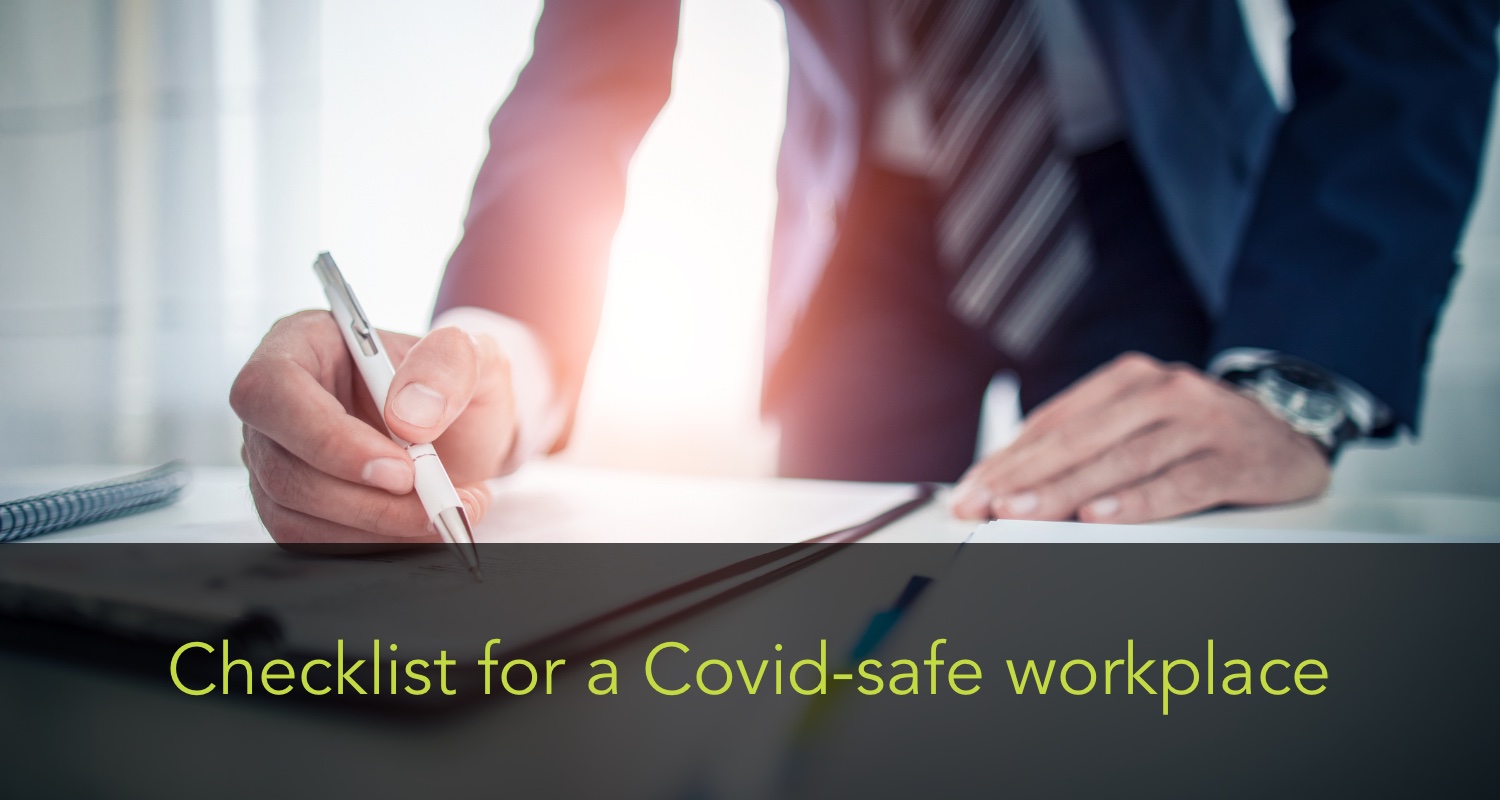
Making sure your workplace is COVID-safe is as much about the wellbeing of your staff and their families as it is getting your business back up and running.
We’ve put together a checklist of things for employers to consider when reopening their workplace. Whether you have decided to embrace more remote working or have staff eager to get back into the office, there are some key steps to take, which mean your reopening of workspaces is made smoother.
Take a risk-assessment
It may seem obvious, but conducting a thorough risk assessment should be the starting point for any workspace reopening. Even if you’ve had staff in the building during the last year, you’ll need to consider the risks as you open up to more employees returning to work.
A thorough risk assessment will give you a good to-do list of changes you need to put in place as you start welcoming the full workforce back through the doors.
If you have fewer than five employees, you don’t have to put your risk assessment in writing. However the HSE has set up an anonymous hotline that employees and workers can use to report workplace concerns related to COVID-19, therefore it’s essential to communicate the steps you are taking and keep them updated. And HSE will be carrying out random spot checks to make sure organisations are complying. Plus it’s very satisfying to feel like you’re getting things done.
Businesses with over 50 employees are expected to publish their risk assessments. It’s advisable for any business to do this even if they are smaller.
Should you be unsure what to include in this assessment, HSE has a PDF checklist that you can use here.
Decide what measures you’re keeping
You will have put in a number of COVID measures over the past year. You now need to decide which of those measures you want to unpick and which to leave in place. You may wish to move to hybrid-working. Or to maintain social distancing within the office. You will also need to have policies around mask-wearing, vaccinations and what you plan to do if there is a positive COVID test within the workforce.
Policies that you put in place a year or 18 months ago will now need updating. We have some simple solutions to help you seamlessly adjust to the changes. And adapt to whatever the winter months may bring. Contact us to find out how we can help.
Hygiene

Most people know to wash their hands thoroughly after going to the toilet. But you might want to nudge your staff to clean their hands at additional intervals throughout the day.
Making hygiene part of their daily work routine will make being COVID-safe a lot easier. Remember that washing your hands with soap and water is the best way to protect yourself from coronavirus.
Science writer, Sara Rigby explains that: “soap has similar molecules to the ones that make up the outer layer of the virus. [When you hand wash] this disrupts the neatly-ordered shell around the virus, dissolving it in the running water and killing the virus.”
Reminding staff to wash hands or use alcohol-based hand sanitiser at regular intervals will keep your workplace safe and your team healthy.
Talk to your staff
Clear communication with your staff is essential. Let your employees know what you are doing to keep them safe and what is expected of them when they are in the office. You may also wish to let them know about how you will manage staff who are unable to have a vaccine or who live with vulnerable people.
Likewise, letting parents know what your policies are on school or class closures will help them plan for childcare if they need to do so.
Consider staff wellbeing
According to the Coronavirus: Mental Health in Pandemic study, over half of the population were still feeling anxious about coronavirus at the end of June 2020. And we know that there is an ongoing mental health crisis. We offer mental health and wellbeing training as part of our packages to support you and your staff.
Taking your staff’s wellbeing into account when reopening the workplace is recommended. Your employees need to feel safe at work to be productive.
If you have staff members who are unwilling to come back into the office or place of work, then you should take some advice on how to handle the situation best.
Look at new ways of working

You likely need to look at new ways of working. During the restrictions, you have probably had some level of remote working put in place.
Some of your staff may have enjoyed being able to work from home and not want to do a commute to the office again. Other employees might have had enough of their four walls and be eager to get out of the house.
As an employer, you need to balance what is right for your business. It may not be possible for some workers to do their job remotely. You may wish for others to return to the office when they’d prefer to be at home.
Make sure you understand what each staff member needs to do to perform their jobs. And whether you are willing to adapt to new ways of working within the business.
Likewise, staggering start times and breaks can help keep your building covid-safe so you may want to consider offering this to staff as well.
If you are having difficulties with some staff members, make sure to check your policies and contracts, plus any additional agreements you put in place at the start of lockdown.
If you are unsure, we can help.
Update policies, procedures and contracts
Now is the time to update all of your policies and procedures as well as issue new contracts. If you have been making use of the job retention scheme, then you’ll need to have your paperwork in order and filed safely.
As the scheme begins to wind down, we recommend that you issue new contracts to employees. The world of work has gone through a significant change over the past year, and you need to reflect this in how you employ staff.
Accepting visitors
Finally, if your workplace accepts outside visitors, you need to make sure you communicate your office safety rules with them. Checking temperatures and encouraging hand washing on entry should be a starting point. And you may need to add in extra cleaning routines.
You should keep details of your visitors in the event of an outbreak of coronavirus in your office or connected to one of your employees. This will help track and trace anyone who might have been in contact with any person who is showing symptoms of coronavirus.
Planning for the future
Coronavirus is likely to be with us for some time and while restrictions have lifted, we don’t know what the next winter may bring.
Getting the process of reopening right protects you, your employees and your customers. It also protects your business.
For more information on how we can help you do this in a stress-free way, get in touch.

Recent Comments